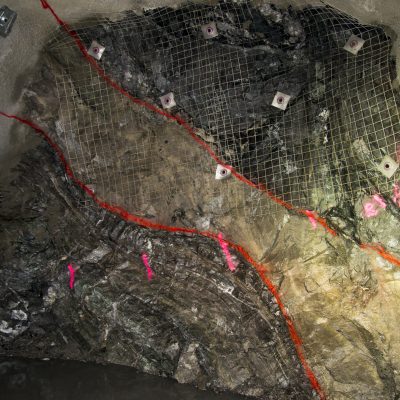Geology Services
Mining Engineering Services

Surpac-based Grade Control system
Cube Consulting has a very strong focus on the operating needs of producing mine sites, with a history in building, implementing and training in grade control systems built on the Surpac platform.
Cube Consulting’s GCX product provides a logical sequence of commonly performed grade control tasks integrated into an easy-to-use and intuitive package. The system is available for both Open pit and Underground allowing a variety of modelling methods, easy to configure material classifications and reporting. GCX is used widely across a number of commodities including precious metals, base metals and bulk commodity operations.
The Cube Grade Control system can be deployed in minimal time. We provide full training and documentation to ensure the system is implemented successfully and the mine site geology team is efficient and productive.
Expert advice for mine geologists
Mine grade control is a process, highly dependent on data collection and data management systems. The Cube geology team are experts at reviewing what is in place to ensure consistent, repeatable outcomes from the GCX system implemented at your site.
We provide advice on geological domaining, material classification and estimation as required and work closely with your production and quality control geologists to implement an easy-to-use and intuitive set of processes.
Easy to use, repeatable framework
- Logical step-by-step process flow
- External controls for self-customisation
- Choice of estimation methods
- Auditable
- Statistical and validation tools
- Full documentation
In an open pit environment, the system works seamlessly within Surpac to manage domaining, estimation and dig block creation and produces plots and reports efficiently. Of particular interest is the iterative routine for creating and adjusting dig blocks and assigning appropriate material classifications.
For an underground mine, the system manages domaining and estimation and produces models that are ‘design-ready’ for engineering purposes. Once stopes are designed and reflagged into the grade control model, it is a simple matter to manage stope and development depletion with reports produced efficiently and in a consistent manner.
There are a number of specialist tools available for geologists working in underground mines, including grade control drill design, face channel sampling routines, structural visualisation and face and back map draping tools.
Grade Control in narrow vein deposits
Cube Consulting has many years’ experience developing and implementing techniques to improve the modelling and grade control of narrow lode deposits. Selecting an appropriate estimation methodology for a mineral deposit is not an arbitrary decision. This decision should be based on the geological and mineralisation characteristics, as well as the envisaged mining methodology.
Two-dimensional (2D) geostatistical estimation techniques are well suited to narrow lode deposits where no mining selectivity is possible across the width of the lode. 2D methods account for the different sample lengths/supports by estimating an ‘accumulation’ variable, which is defined as the product of the measured grade and the thickness of the lode. The final estimated grade is defined as the ratio between the estimated accumulation and the estimated thickness.
2D estimation techniques may not be optimal for all narrow lode deposits and are dependent on the sample support, relationship between grade and thickness/density, envisaged mining selectivity and experience of the mining or resource geologist.

